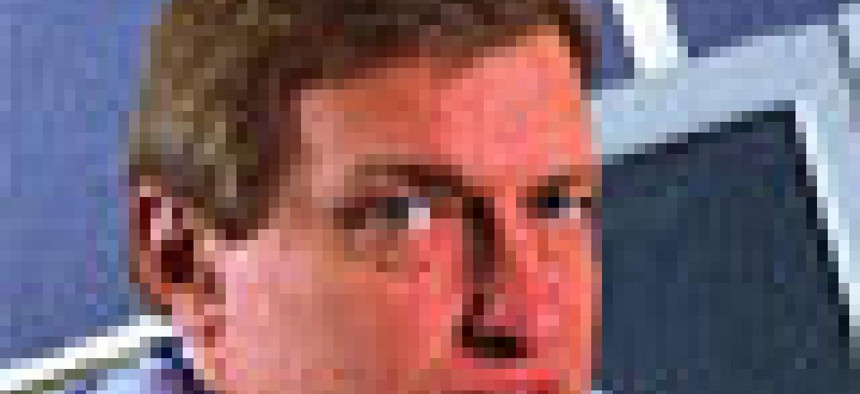Pervasive Computing: 'The Next Big Thing'

With little fanfare, the National Institute of Standards and Technology has launched a new initiative on pervasive computing that could help clear the path for new companies trying to penetrate this emerging market.
By John Makulowich, Senior WriterWith little fanfare, the National Institute of Standards and Technology has launched a new initiative on pervasive computing that could help clear the path for new companies trying to penetrate this emerging market. For researchers in the public, private and academic sectors, pervasive computing amounts to an environment in which people will interact casually with a diverse range of portable or invisible computers. All these devices will be networked to each other and to the Internet.Marty Herman, division chief of information access and user interfaces at NIST, said his agency will serve as an impartial developer of measurements, testing methods and standards, and focus on both short-term and long-term needs in pervasive computing.Among the long-term needs are rich, natural forms of human-computer interaction, such as speech and visual recognition and tracking; sophisticated information access from multimedia databases; extensive information presentation capabilities; collaborative working environments; dynamic networking; security and reliability, he told Washington Technology.Today, industry mainly is targeting short-term needs, such as the development and use of information appliances (NetTV devices, screen phones, Internet automotive systems and electronic books) and connecting these devices to the Internet with both wireless and wired links.Alex "Sandy" Pentland, academic head of the media laboratory and Toshiba Professor of Media Arts and Sciences at the Massachusetts Institute of Technology, noted that smart spaces and wearable computing are widely seen as "the fourth generation of computing, the next big thing." One indicator of the NIST initiative's importance is the Technologies of Invisible Computing conference (research.microsoft.com/tic/) to be held July 19-23 in Seattle. Hosted by the University of Washington /Microsoft Research Summer Institute, the conference sports 37 participants that amount to a Who's Who of the pervasive computing industry. The Web page touts the conference focus on emerging technologies that will "enable a new class of information and computing devices that will be highly ubiquitous and highly invisible." According to Pentland, research in pervasive computing will change drastically the way we think about our environments, because many of the objects that surround us are changing from dead and inanimate to entities with eyes and ears and that can interact with us in a limited way."Standards efforts in this area are critical. I recently counted more than two dozen large university initiatives and more than 30 industrial initiatives in the area," Pentland said. "Most of the industrial projects are being kept under wraps for competitive advantage. Pretty clearly, there is a potential problem here, one that standards efforts can help."However, he said that to be really helpful, the standards efforts need to be an open-ended or evolving process, such as the more recent MPEG4 standards efforts. Such standards define some basic communications tools and provide baseline capabilities but make no attempt to specify everything.Another key player in the pervasive computing arena is IBM Corp., Armonk, N.Y. Their initiative is aimed at driving connectivity between these devices and information, transactions and servers in the network.Sandeep Singhal, senior architect for IBM Pervasive Computing, said his company's effort is parsed into three different initiatives. First, there is pervasive computing as an extension to e-business activities. This could amount to pulling data from pervasive devices, whether in automotive computers or part of desktops, and making it available to Web clients through the network. This also includes the effort to support disconnected operations, for example, on low reliability, wireless networks and on out-of-coverage airplanes.The second is to make the devices as easy to use as possible, to approach them as appliances rather than computers. This initiative sees a service provider installing, maintaining, monitoring and managing the application and making it always available to the user."We are trying to reduce the level of pain in computing, such as when individuals crash their systems. The role of the service provider would be to keep the identification safe in the network and provide life-cycle support," Singhal said. "This is essentially the thin client model taken to the extreme, with a multitude of thin clients. There would be zero user administration. And the goal is higher information value."The third element is to define and promote an open client platform so that any number of providers can deliver applications and services on it. Keys here are the Java programming language, flexibility in the user interface and network protocols."The essence of what we are trying to do is come up with devices that have an appropriate form factor for their function and are managed by the network without user intervention. We know a single form factor will not suffice," Singhal said.Asked about the NIST initiative, Singhal expressed support by stating it is the right time to be looking at standards. In emerging markets such as pervasive computing, he said, you have either chaos or a group of players trying to enter the market without critical mass. Meanwhile, the stated goal of the Seattle conference is to "understand the interplay of the various technologies that need to be brought to bear, ranging from new user interface paradigms and sensors to network-based services and network infrastructure."The conference agenda was framed by four key issues:*First, understand the types of information that can be integrated to help devices determine user intent. *Second, understand how different types of wireless technology blend together to provide a networking fabric to support a range of intermittently connected devices with limitations on their bandwidth and power consumption. *Third, determine the changes needed for the networking infrastructure in both basic protocols as well as organization of services. *Finally, develop new paradigms for the user interfaces of classes of ubiquitous devices and how their task specificity can lead to streamlined and simplified use.


Marty Herman
NEXT STORY: Capital Roundup